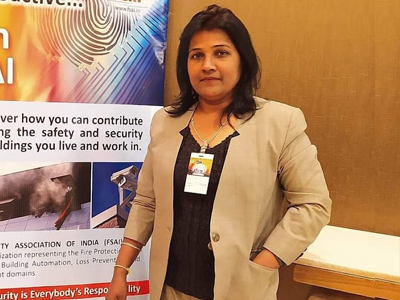Trends at the intersection of VIDEO AND AI

by Arindam Bhadra
Installation and use of CCTV Cameras for security & surveillance is a no-brainer. Cameras are considered a fundamental commodity for setting up any surveillance infrastructure, but at the same time, 24×7 monitoring of hundreds or thousands of video feeds by operators doesn't serve the purpose of providing proactive surveillance and quick response to breaches.
2022, where most security cameras deliver HD performance, with more and more models offering 4K resolution with 8K on the horizon. Advanced processing techniques, with and without the use of infrared illuminators, also provide the ability to capture usable images in total darkness; and mobile devices such as drones, dash cams, body cams, and even cell phones have further expanded the boundaries for video surveillance. Additionally, new cameras feature on-board processing and memory to deliver heightened levels of intelligence at the edge.
But video has evolved beyond the capabilities of advanced imaging and performance to include another level: Artificial Intelligence. Video imaging technology combines with AI, delivers a wealth of new data, not just for traditional physical security applications, but for a much deeper analysis of past, present, and even future events across the enterprise.
This is more than a big development for the physical security industry: it is a monumental paradigm shift that is changing how security system models are envisioned, designed, and deployed. Much of the heightened demand for advanced video analytics is being driven by six prevalent industry trends:
1) Purpose-built performance
Several video analytics technologies have become somewhat commoditised “intelligent” solutions over the past few years, including basic motion and object detection that can be found embedded in even the most inexpensive video cameras.
New, more powerful, and intelligent video analytics solutions deliver much higher levels of video understanding.
This is accomplished using purpose-built deep learning, employing advanced algorithms and training input capable of extracting the relevant data and information of specific events of interest defined by the user. This capability powers the automation of two important workflows: the real-time monitoring of hundreds or thousands of live cameras, and the lightning-fast post-event search of recorded video. Vintra video analytics, for example, accomplishes this with proprietary analytics technology that defines multi-class algorithms for specific subject detection, classification, tracking, and re-identification and correlation of subjects and events captured in fixed or mobile video from live or recorded sources.
2) Increased security with personal privacy protections
The demand for increased security and personal privacy are almost contradictory given the need to accurately identify threatening and/or known individuals, whether due to criminal activity or the need to locate missing persons. But there is still societal pushback on the use of facial recognition technology to accomplish such tasks, largely surrounding the gathering and storage of Personally Identifiable Information (PII).
The good news is that this can be effectively accomplished with great accuracy without facial recognition, using advanced video analytics that analyse an individual's whole-body signature based on various visual characteristics rather than a face. This innovative approach provides a fast and highly effective means of locating and identifying individuals without impeding the personal privacy of any individuals captured on live or recorded video.
3) Creation and utilisation of computer vision
There are a lot of terminologies used to describe AI-driven video analytics, including Machine Learning (ML) and Deep Learning (DL). Machine learning employs algorithms to transform data into mathematical models that a computer can interpret and learn from, and then use to decide or predict. Add the deep learning component, and you effectively expand the machine learning model using artificial neural networks which teach a computer to learn by example. The combination of layering machine learning and deep learning produces what is now defined as Computer Vision (CV). A subset but more evolved form of machine learning, computer vision is where the work happens with advanced video analytics. It trains computers to interpret and categorize events much the way humans do to derive meaningful insights such as identifying individuals, objects, and behaviours.
4) Increased operational efficiencies
Surveillance systems with a dozen or more cameras are manpower-intensive by nature, requiring continuous live or recorded monitoring to detect and investigate potentially harmful or dangerous situations. Intelligent video analytics, which provides real-time detection, analysis, and notification of events to proactively identify abnormalities and potential threats, transform traditional surveillance systems from reactive to proactive sources of actionable intelligence. In addition to helping better protect people, property, and assets, advanced video analytics can increase productivity and proficiency while reducing overhead.
With AI-powered video analytics, security and surveillance are powered by 24/7 technology that doesn't require sleep, taking breaks, or calling in sick. This allows security operations to redeploy human capital where it is most needed such as alarm response or crime deterrence. It also allows security professionals to quickly and easily scale operations in new and growing environments.
5) A return on security investment
The advent of advanced video analytics is slowly but surely also transforming physical security systems from necessary operational expenses into potential sources of revenue with tangible ROI, or as it is better known in the industry, ROSI – Return on Security Investment. New video analytics provide vast amounts of data for business intelligence across the enterprise. Advanced solutions can do this with extreme cost-efficiency by leveraging an organization's existing investment in video surveillance systems technology.
This easy migration path and a high degree of cost-efficiency are amplified by the ability to selectively apply purpose-built video analytics at specific camera locations for specific applications. Such enterprise-grade software solutions make existing fixed or mobile video security cameras smarter, vastly improving how organizations and governments can automatically detect, monitor, search for and predict events of interest that may impact physical security, health safety, and business operations. For example, slip-and-fall analysis can be used to identify persons down or prevent future incidents, while building/area occupancy data can be used to limit crowds or comply with occupancy and distancing guidelines. In this way, the data gathered is a valuable asset that can deliver cost and safety efficiencies that manual processes cannot.
6) Endless applications
The business intelligence applications for advanced video analytics platforms are virtually endless including production and manufacturing, logistics, workforce management, retail merchandising and employee deployment, and more. This also includes mobile applications utilising dashboard and body-worn cameras, drones, and other forms of robotics for agricultural, oil and gas, transportation, and numerous other outdoor and/or remote applications.
An added benefit is the ability to accommodate live video feeds from smartphones and common web browsers, further extending the application versatility of advanced video analytics.
Navigating a busy intersection
The accelerated rate of development for new advanced video analytics makes the intersection of video and AI technologies a very busy one to navigate. Just like crossing the street, one needs to be cautious in their approach. There are a lot of players entering this space who are making big statements and claims about their solutions.
When vetting a provider, consider that it's all about how they develop their technology, the accuracy they deliver, and their ability to leverage this new source of data to improve the specific outcomes you need to achieve. And most of all, it's about proof of performance and how they arrived at the desired outcomes. Navigate your way across this busy intersection pragmatically, and you will find intelligent video analytics to be a real game-changer for your organisation's physical security operations.





.png)







